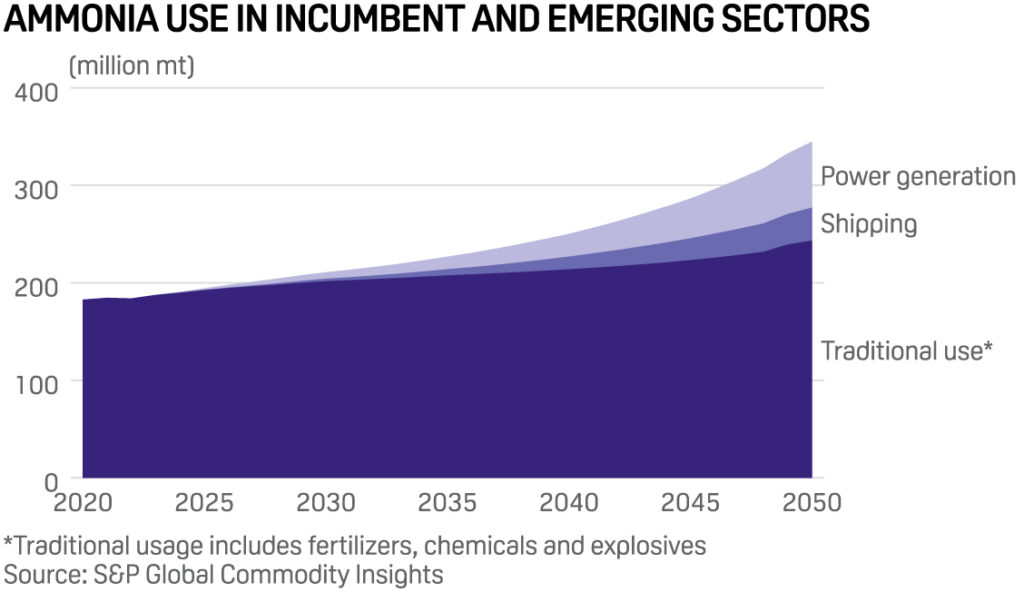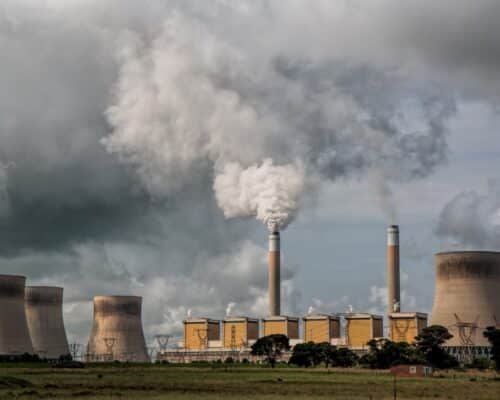Ammonia Fuel: Advantages and Disadvantages
Photo: Shutterstock/Fabian Emanuel Balint
13 July 2023 – by Eric Koons Comments (0)
Ammonia fuel is gaining significant attention as a potential alternative to fossil fuels, with much debate surrounding the advantages and disadvantages of ammonia fuel. Ammonia fuel acts as an energy carrier similar to hydrogen but has several unique properties. This makes it a versatile energy source for various applications, including energy storage and transportation.
Global Demand for Ammonia as a Fuel
Currently, there is significant global demand for ammonia as a major component of fertiliser. However, the ammonia fuel market is still in its infancy, with S&P Global stating it is “currently not measurable as the volumes are too small”. Regardless, there is growing investment in ammonia, and estimates show that ammonia fuel will account for 4% of global ammonia demand by 2030 and 29% in 2050.
This is burgeoned by both the public and private sectors. For example, the International Energy Agency (IEA) recognises ammonia as a critical component of its net-zero by 2050 scenario. Similarly, new green ammonia fuel projects are being announced across the world.
Most governments and research organisations also emphasise the need for further research to address safety, storage and distribution challenges. Following are some of the top pros and cons of ammonia fuel

What Are the Advantages of Ammonia Fuel?
Here are some of the top advantages of ammonia fuel.
1. Ammonia Can Be Carbon Dioxide Free
Ammonia can be carbon free. It is an energy carrier and does not release carbon dioxide when burned. Ammonia fuel cells and ammonia combustion engines release only nitrogen and water vapour, eliminating direct CO2 emissions.
As an energy carrier, it stores a portion of the input energy from its production. When the input energy comes from a CO2-free source, like renewable energy, ammonia will also be carbon free. Carbon-free ammonia is known as green ammonia.
2. High Energy Density
Ammonia has a high energy density, enabling efficient energy storage and transportation. This quality is particularly valuable for applications requiring large-scale energy storage or long-distance transportation, such as in the maritime or heavy-duty transport sectors. The energy density of ammonia makes it an appealing option for energy systems seeking reliability and versatility.
3. Easier Storage Requirements
Ammonia offers more favourable storage properties than other energy carriers like hydrogen. Ammonia requires modest pressure and a manageable temperature of -33oC for storage.
These properties make it easier and less costly to transport and handle. This advantage reduces the need for extensive infrastructure modifications and simplifies integration into existing energy systems, fostering its potential adoption.

4. Promotes Renewable Energy Adoption and Not Fossil Fuels
Green ammonia integrates into renewable energy systems and fills several existing gaps. It can act as an efficient long-term storage medium for renewables, which are inherently dependent on weather conditions – making them intermittent.
It is also produced using renewable energy instead of fossil fuels like natural gas, driving up demand for renewables and increasing incentives for developing renewable power facilities. This dual role helps promote the energy transition and makes the widespread adoption of renewables more seamless.
5. Leveraging Existing Transport and Storage Infrastructure
Ammonia transport and storage infrastructure already exists for fertiliser production. Leveraging this existing infrastructure and supply chain allows for easier integration of ammonia fuel into the energy sector.
What Are the Disadvantages of Ammonia Fuel?
Here are some of the top disadvantages of ammonia fuel.
1. Toxicity Concerns
Ammonia is a toxic substance and poses serious health hazards. High concentrations can cause severe burns and blindness, while long-term exposure at lower levels can lead to chronic respiratory problems.
This poses challenges in terms of ensuring worker safety and preventing accidental releases. However, proper safety measures and regulations can effectively mitigate the risks associated with handling ammonia.
2. NOx Emissions When Burn in Internal Combustion Engine
While ammonia itself does not emit CO2 during combustion, it can produce nitrogen oxides (NOx) when burned in internal combustion engines. Nitrogen Oxides emissions are potent greenhouse gases and contribute to air pollution, leading to adverse effects on human health and perpetuating global warming.
Improving ammonia combustion technologies and catalytic converters can help minimise NOx emissions, which helps to address this concern.
3. Infrastructure and Technology Challenges
First, electrolyser technology, which is needed to produce green hydrogen as a feedstock for ammonia production, has yet to be at a commercial scale. Second, while the existing ammonia transportation and storage infrastructure is a good start, it must expand significantly.
Is Ammonia a Good Fuel?
Considering the advantages and disadvantages, ammonia fuel showcases immense potential as a viable option for the energy industry. While it presents certain challenges, the benefits of ammonia fuel significantly outweigh them.

The pressing need to reduce carbon emissions to mitigate climate change makes the zero-carbon nature of ammonia extremely attractive. Additionally, investment is already flowing into the technology, with improvements in production, use and transport efficiency likely coming in the next few years.
While acknowledging the challenges of ammonia fuel, ammonia is showing excellent potential as a fuel source for the future.
by Eric Koons
Eric is a passionate environmental advocate that believes renewable energy is a key piece in meeting the world’s growing energy demands. He received an environmental science degree from the University of California and has worked to promote environmentally and socially sustainable practices since. Eric’s expertise extends across the environmental field, yet he maintains a strong focus on renewable energy. His work has been featured by leading environmental organizations, such as World Resources Institute and Hitachi ABB Power Grids.
Read more



